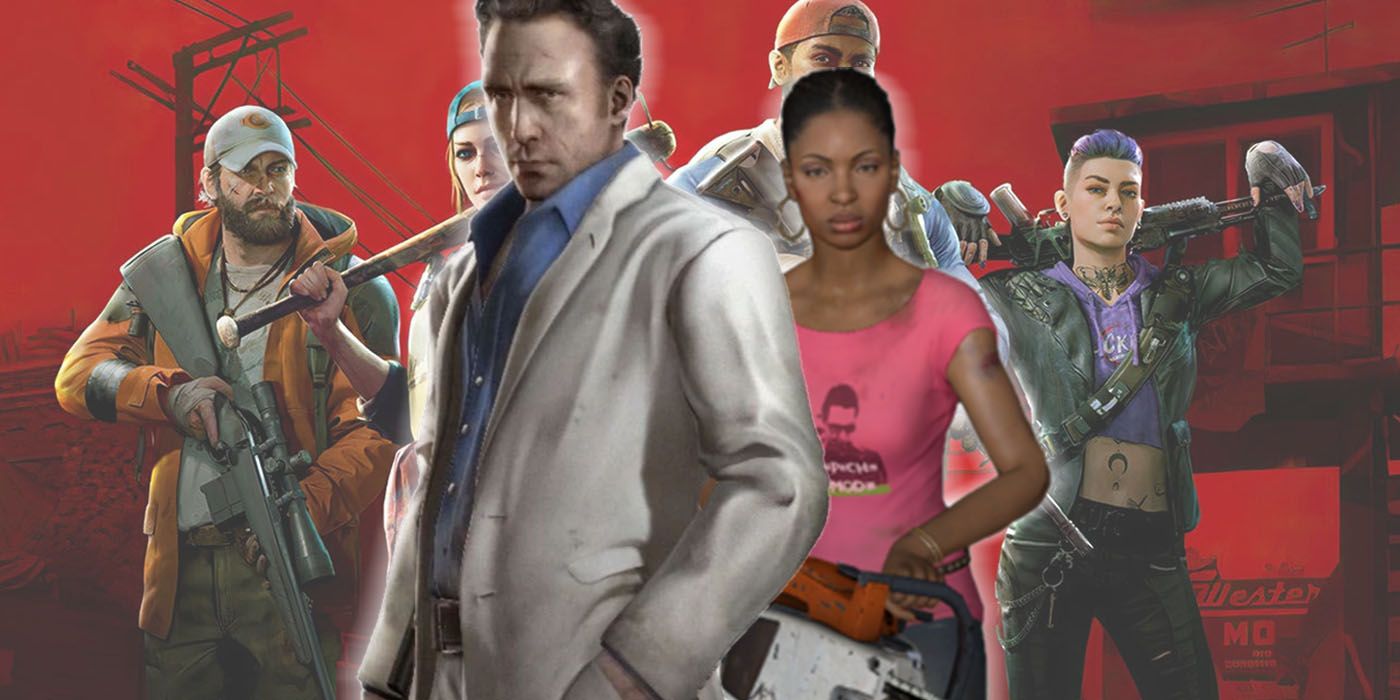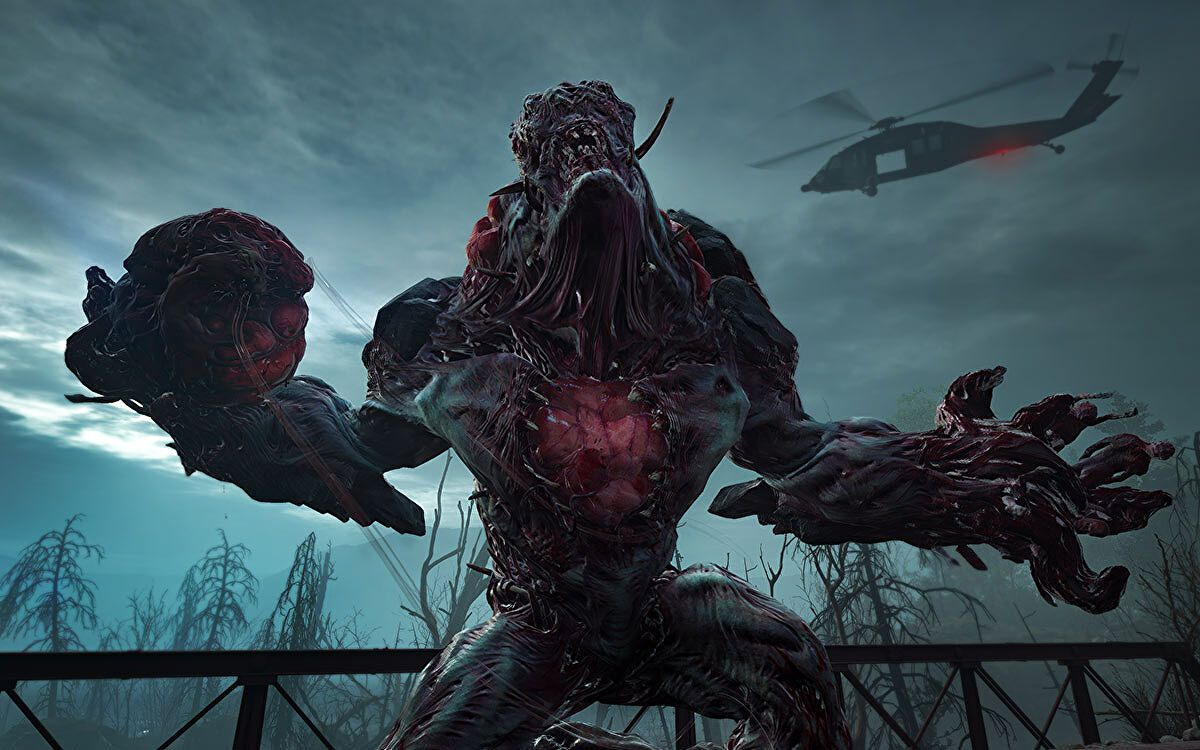In March 2019, fans of Valve's acclaimed Left 4 Dead franchise received news they'd been craving for almost a decade -- Left 4 Dead was receiving a successor. It wouldn't be a direct follow-up, but the beginning of a new franchise intended to be Left 4 Dead's spiritual continuation. That game was Back 4 Blood, developed by Turtle Rock Studios, who even had a handful of former Left 4 Dead developers on their team. In a way, Valve's notorious aversion to making third entries in any of their franchises was circumvented, if indirectly.
However, as Back 4 Blood's release date drew nearer and people were learning more about the game as well as testing the alpha and beta versions, many Left 4 Dead fans were disappointed to find that the game was not all they were expecting it to be, and the new features and mechanics proved polarizing. Despite being a commercial success, the Steam Charts show that Back 4 Blood has far fewer concurrent players than Left 4 Dead 2, with the former peaking at 4,716 players in the 30 days before the time of this writing, which starkly contrasts with the latter's 35,114 players. Here are some possible reasons which might explain this discrepancy.
The Fundamental Mechanics in Back 4 Blood Are Different
Before delving into anything else, the core and fundamental game mechanics of both games should be compared. As Back 4 Blood was advertised as a spiritual successor to Left 4 Dead 2, one might expect them to play and feel very similarly, albeit with more updated features and graphics in Back 4 Blood. However, this isn't quite the case. The Left 4 Dead games are, at their core, run-and-gun shooters. Players have fast base movement speed and weapons are all hip-fired in a similar vein to first-person shooters of old. These simple yet fundamental mechanics give Left 4 Dead its core gameplay of running and shooting, and movement and combat are intertwined with one another, allowing skilled players to outmaneuver enemies and destroy them.
On the other hand, Back 4 Blood's movement and gunplay are much more reminiscent of modern shooter titles. Movement has been slowed down noticeably in order to make room for sprinting, which provides faster traversal at the cost of being able to shoot. Hip-firing is unreliable and players are expected to aim down their sights, an act that slows movement even further. Victory relies far more on accurate shooting and well-timed reloads than on movement, perhaps illustrated by the inclusion of weak points on several of the larger Ridden enemies. All in all, Back 4 Blood feels more like Call of Duty zombies or Killing Floor 2 than it does like Left 4 Dead 2, and doesn't quite scratch the same itch that the latter does.
Back 4 Blood Is Balanced Around Progression
One of the standout qualities of the games in the Left 4 Dead franchise is their sheer simplicity. There are no leveling, progression, or reward systems in place whatsoever, and no external incentive is provided to play the game other than the enjoyment of the experience itself and the satisfaction of performing well at it. As there are no ways to make characters stronger, there are no ways to beat the game through numerical stat increases or build optimization. Only knowledge of the game's core mechanics and skill will give players the upper hand against the Infected. The popularity of Left 4 Dead shows that a sense of achievement in itself continues to be a great motivator for many gamers to play.
On the other hand, Back 4 Blood fully embraces more modern ideas of progression, as shown by the in-depth Card Deck system, whereby players assemble or choose a deck of Cards that gives buffs to either the player or their whole team. New Cards can be obtained by unlocking Supply Lines (a form of item unlocking similar to a free battle pass) using Supply Points earned by completing games. Also, within games, players can accumulate Copper, which can be spent on useful items from vendors such as weapons, attachments, or equipment. Back 4 Blood is a game balanced around engagement with RPG elements and shifts the requirements for victory from player skill alone to player skill with an optimized character -- something that Left 4 Dead fans may not find appealing.
Back 4 Blood Has No Campaign Versus Mode
One of the reasons the Left 4 Dead franchise became so popular was its Versus Mode, in which one team attempts to complete campaign missions as the Survivors, and the other team plays as Infected who must stop them from progressing. The teams then swap, and the team who made it the furthest through the level wins the round. This take on PvP as a linear experience is extraordinarily unique and appeals to a broad player base. Those who enjoy optimizing level runs can have as much fun as those who enjoy outperforming other players in combat. The flow of it is different from typical forms of PvP in other games, in that the game is constantly moving forward, cranking up the pressure on both teams the further the Survivors progress.
Versus mode is the backbone of the Left 4 Dead online community, so many players were disheartened to hear that Back 4 Blood would not include a campaign Versus Mode. Instead, Back 4 Blood's PvP mode is Swarm Mode, in which the Cleaners must hold out against waves of Ridden, and teams take turns to see who can survive the longest. Though similar on paper to Versus Mode, Swarm Mode flows very differently. Whereas Versus Mode emphasizes movement and map knowledge as the keys to victory, Back 4 Blood's horde-style PvP is almost entirely combat-based and has more in common with game modes like Killing Floor 2's Versus Survival. Ultimately, Swarm Mode doesn't make a good substitute for Versus Mode, thus providing no reason for fans of the latter to emigrate from Left 4 Dead 2.



.png)
